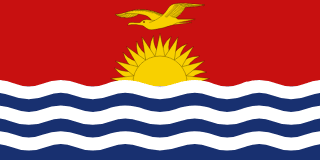Kiribati - Environment

As far as the environment of Kiribati is concerned, there have been . As for nvironment - international agreements, we have; .
About the environment of Kiribati
| Climate | We have tropical; marine, hot and humid, moderated by trade winds |
|---|---|
| Revenue from forest resources | |
| Revenue from coal | |
| Waste and recycling | Municipal solid waste generated annually: 35,700 tons (2024 est.) |
| Total renewable water resources | |
| Major rivers (by length in km) | |
| Land Use | |
| Agricultural land | 42% (2023 est.) |
| Agricultural land: arable land | arable land: 2.5% (2023 est.) |
| Agricultural land: permanent crops | permanent crops: 39.5% (2023 est.) |
| Agricultural land: permanent pasture | permanent pasture: 0% (2022 est.) |
| Forest | 1.3% (2023 est.) |
| Other | 56.7% (2023 est.) |
| Urbanization | |
| Urban population | 57.8% of total population (2023) |
| Rate of urbanization | 2.77% annual rate of change (2020-25 est.) |
| Major urban areas (Pop) | 64,000 TARAWA (capital) (2018). |
All Important Facts about Kiribati
Want to know more about Kiribati? Check all different factbooks for Kiribati below.









